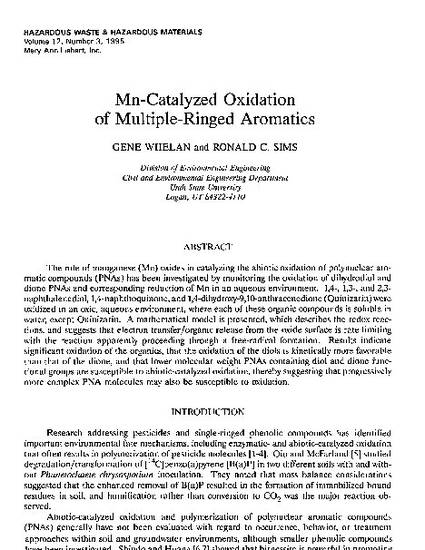
The role of manganese (Mn) oxides in catalyzing the abiotic oxidation of polynuclear aromatic compounds (PNAs) has been investigated by monitoring the oxidation of dihydrodiol and dione PNAs and corresponding reduction of Mn in an aqueous environment. 1,4-, 1,3-, and 2,3-naphthalenediol, 1,4-naphthoquinone, and l,4-dihydroxy-9,10-anthracenedione (Quinizarin) were oxidized in an oxic, aqueous environment, where each of these organic compounds is soluble in water, except Quinizarin. A mathematical model is presented, which describes the redox reactions, and suggests that electron transfer/organic release from the oxide surface is rate limiting with the reaction apparently proceeding through a free-radical formation. Results indicate significant oxidation of the organics, that the oxidation of the diols is kinetically more favorable than that of the dione, and that lower molecular weight PNAs containing diol and dione functional groups are susceptible to abiotic-catalyzed oxidation, thereby suggesting that progressively more complex PNA molecules may also be susceptible to oxidation.
Available at: http://works.bepress.com/ronald_sims/19/

This article's copyright is owned by Mary Ann Liebert, Inc. (http://www.liebertpub.com/), and it is posted here with permission of the publisher.